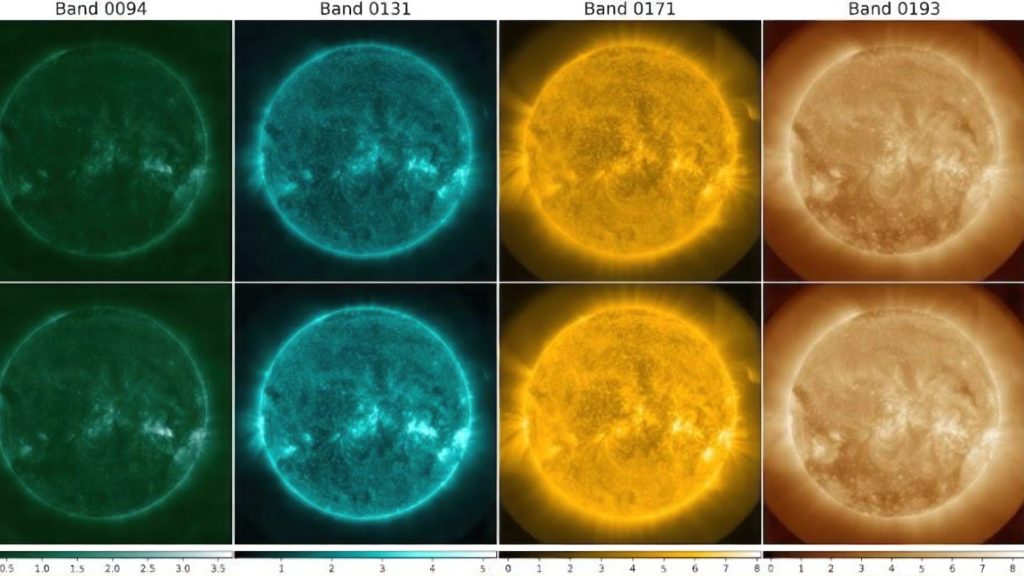In the age of artificial intelligence, there are models springing left and right: some are used for retails, others to predict the market, there are even specific AI engineered to turn any photograph into a cute, Ghibli-style illustration. While some of them seem silly, and others straight up terrifying (who wants a machine to predict their shopping patterns better than themselves?), the NASA and IBM have conjured to create Surya. This AI model is able to mimic with pinpoint accuracy our sun, and will let us know in advance when to expect solar storms.
The team named the model Surya after the Sanskrit word for the Sun—a nod to centuries of sky-watching that stretch from early Indian calendrics to monumental observatories and precise eclipse math. It’s a fitting label for a tool that tries to turn observation into foresight.
Why space weather needs better forecasts
When the Sun pops off—through solar flares or coronal mass ejections—it can jam radio, skew GPS, raise radiation on polar flights, and even stress power grids. During active periods, these hits can arrive often, and the effects ripple from satellites to internet timing. Earlier, more reliable alerts buy time to reroute flights, power down at-risk assets, or nudge satellites. That’s the job this model aims to support.
How the model learns from SDO
For nearly fifteen years, NASA’s Solar Dynamics Observatory has stared at the Sun nonstop, snapping images every dozen seconds across multiple wavelengths and tracking magnetic fields at the surface.
From that firehose, the team carved out nine years of high-resolution imagery and magnetograms to teach a general “solar sense” that can transfer to many tasks. The pretraining happens at the SDO’s native 4096×4096 resolution across 8 AIA and 5 HMI channels, so the model learns both fine loops and broad flows instead of a blurry downsized version of our star.
Under the hood, engineers paired a long–short vision transformer with spectral gating—a combo that sees tiny, local features while also keeping track of planet-wide structure, and that trims memory needs when juggling huge solar images. Trained to predict what SDO would see in the near future, the model can roll forward in time and sketch the Sun’s next moves.
In early tests it produced visual flare forecasts up to two hours ahead and delivered a 16% gain on standard flare-classification benchmarks. Beyond flares, the same learned representation transfers to tasks such as active-region tracking, solar-wind speed prediction, and EUV spectra modeling. This will translate into effective shutdowns, better protocols, and billions of dollars saved in repairs when aircrafts, satellites and so have time to go into Save Mode before getting obliterated by a solar flare. Win-win for space agencies, win-win for companies, and win-win for the average Joe who won’t lose Internet connection for days after a solar storm!
Open science and real-world use
Because the project is open, anyone can grab the weights on Hugging Face and the code on GitHub to reproduce results, fine-tune for specific needs, or build tools on top. NASA also points to support from the NAIRR Pilot—with NVIDIA compute—which helped the team push training at scale.
In practice, you can imagine the model flagging rising risk in an active region, feeding that signal into downstream systems that decide when to send alerts to satellite operators, airlines, or grid planners. It’s a bridge between petabytes of raw imagery and the decisions that protect everyday tech.
What comes next
Right now, Surya is a research-grade foundation model, not a replacement for operational forecasters. The goal is to hand the community a shared “digital twin” starting point that can be adapted fast: a version for flare alerts, another for solar-wind surges, another to track how extreme ultraviolet output puffs up our upper atmosphere and drags satellites.
With more data (including from missions like Parker Solar Probe) and more fine-tuning, Surya could improve lead times and cut false alarms, turning today’s promising demos into tomorrow’s routine alerts.
If you care about flights landing on time, phones finding your location, or lights staying on, tools like Surya are part of the safety net we’ll need through this solar maximum and the next.

